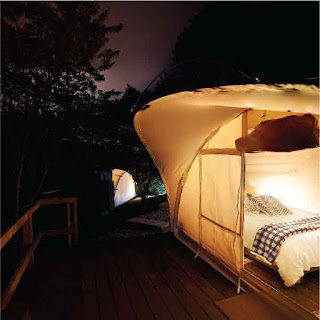Pyramidal tents a concept older than Roman Empire
In Roman Era, every Roman soldier used to carry a triangular piece of fabric “pannis” and when the time to settle the campament arrived he joined to other three companions, all of them carrying their own piece, so the four soldiers were “cum pannis” (with canvas) - some authors consider this the origin of the word companion, against those who think the origin is “cum panis” (with bread; those who share the same bread - in fact it seems something a bit strange to consider a “companion” a member of the same family, for instance, who usually shared the same bread - I am rather between the first group even if I am not a linguistic) . The four soldiers “cum pannis” put together their pieces of fabric and they connected them between each other either by buttoms or by laces in order to form a tent.
The four pieces joined together and supported by a two pieces wooden pole formed a pyramidal
shaped tent with a square base shape and a 2.2 m tall apex. The tent could be ready to use in a few minutes and the soldiers could devote their time to other more gratifying activities.
Many human beings tend to be too lazy, specially in designing matters. So, for centuries tent designers have preferred to play it safe and not to make any additional mental effort than that already made by Roman Army. This is the main reason because we find so frequently so called modern tents that have not varied the shape since centuries.
But this situation could be compared to the use of vehicles formed by a passenger compartment pulled by a vapour machine or even an electric one. Fortunately vehicle designers have not been so lazy as tent designers and now we have known all kinds of cars where the machine and the passenger compartment are integrated together in the same vehicle.
It is time to leave the Roman Army design for history books and to be opened to use instead those tents that incorporate technological developments and offer shapes different from that old pyramidal one in order to make new comfort concepts available to users.








